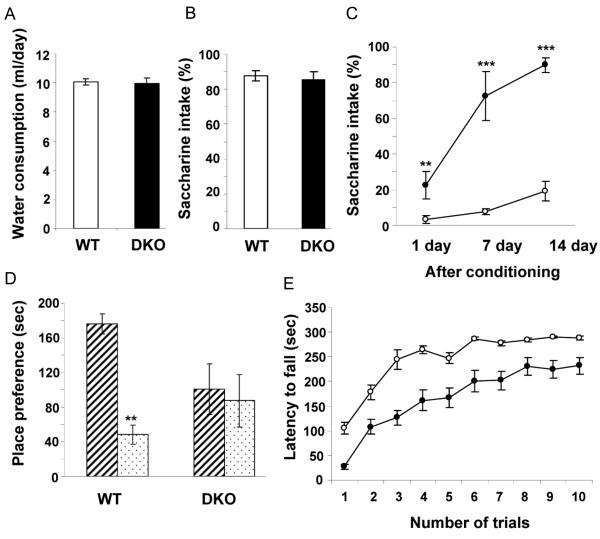Fig. 3. Conditioned learning in DKO mice as evaluated by taste aversion, olfactory-place preference and rotarod-latency to fall.
(A) Prior to conditioning WT and DKO mice consumed the same amount of water (10 mice per group). (B) Both preferred saccharine-flavored over plain water (10 mice per group). (C) After conditioning (linking the saccharine-flavored water with LiCl which caused abdominal discomfort) the WT mice preferred plain water for the 14 days of the experiment, whereas the DKO mice showed accelerated extinction of learning and rapidly resumed their preference for saccharine-flavored water (10 mice per group). Open and closed circles represent WT and DKO mice, respectively. (D) Behavioral preference for conditioning versus non-conditioning odorant (8 mice per group). WT mice spent significantly more time than DKO mice in the compartment containing the conditioning odorant (stripped bar) as compared to the compartment containing the non-conditioning odorant (dotted bar). (E) Motor learning as evaluated by latency to fall in the rotarod test (20 mice per group). Both the WT and DKO mice improved performance with increase in training, but the response of the DKO mice never reached that of the WT mice. Rotarod data, analyzed with a two-way ANOVA, revealed a significant main effect of genotype (P<0.01) and a significant main effect of trial (P<0.0001), but no genotype effect by trial interaction (P = 0.33). Open and closed circles represent WT and DKO mice, respectively. Data points and bars represent mean ± SEM. **P< 0.01, ***P< 0.001.

